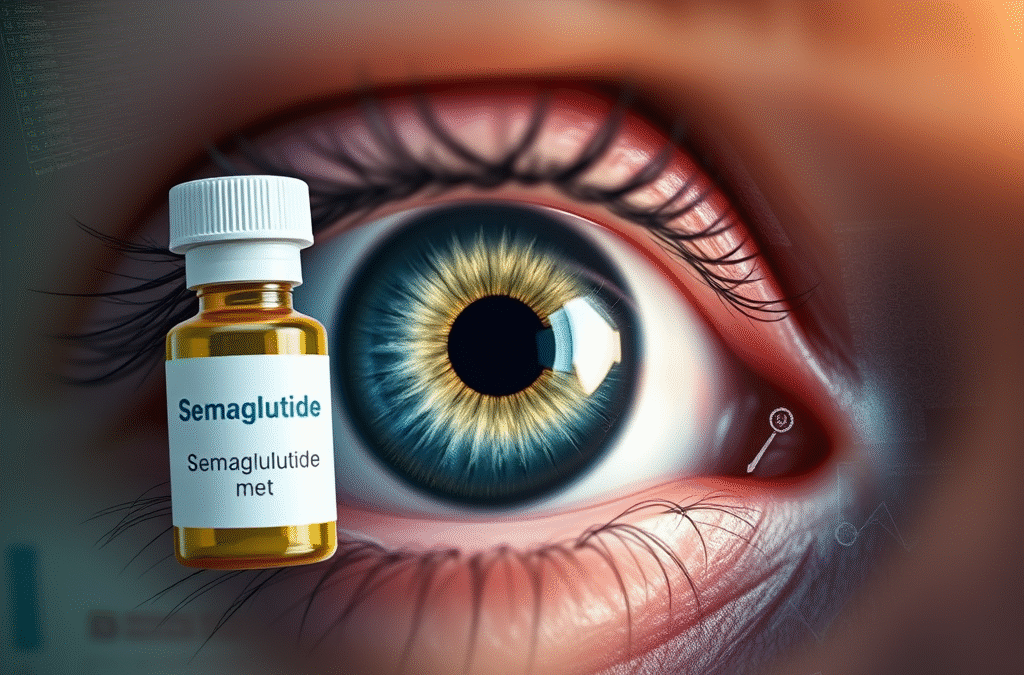Introduction:
Semaglutide, sold under brand names such as Ozempic, Wegovy, and Rybelsus, is a glucagon-like peptide-1 receptor agonist (GLP-1 RA) widely used to manage type 2 diabetes and obesity. Praised for its effectiveness in reducing blood sugar and promoting weight loss, semaglutide has become one of the most prescribed drugs globally. However, recent discussions have raised concerns about a potential link between semaglutide and an increased risk of blindness, specifically diabetic retinopathy-related complications.
Is there truth to these claims, or are they being overstated? Here’s what the science and regulatory data reveal.
What Is Semaglutide?
Semaglutide mimics the GLP-1 hormone, which:
Stimulates insulin secretion
Suppresses glucagon (a hormone that raises blood sugar)
Slows gastric emptying
Promotes satiety, leading to weight loss
It is administered once weekly (Ozempic, Wegovy) or daily (Rybelsus, oral tablet).
The Reported Concern: Semaglutide and Vision Loss
The concern about semaglutide causing blindness emerged primarily from patient reports and limited observational data. Specifically, the risk centers on diabetic retinopathy (DR) — a common complication of diabetes that affects the eyes’ blood vessels and can lead to vision loss.
Origin of the Concern
The SUSTAIN-6 trial (2016), a large cardiovascular outcomes trial for semaglutide, found a slightly increased risk of diabetic retinopathy complications in patients using semaglutide versus placebo (3.0% vs 1.8%). This led to questions about whether semaglutide could worsen DR.
However, further analysis suggested this might be due to rapid improvement in blood glucose, which can temporarily worsen retinopathy — a phenomenon already known from prior diabetes studies.
What Do Experts and Regulators Say?
FDA and EMA: Both the U.S. Food and Drug Administration and the European Medicines Agency include diabetic retinopathy complications as a potential risk in the drug labeling, but neither agency has issued a warning about semaglutide causing blindness.
American Diabetes Association (ADA): The ADA acknowledges the SUSTAIN-6 findings but does not consider semaglutide inherently harmful to eye health. It recommends monitoring for DR, especially in patients with pre-existing eye disease and rapid glycemic control.
Ophthalmologists’ View: Experts stress that diabetic retinopathy is a pre-existing condition in many patients with long-standing diabetes. Rapid improvements in HbA1c from any therapy — including insulin — can temporarily worsen DR.
Understanding the Risk
It’s important to distinguish between causation and association:
There is no evidence that semaglutide directly causes blindness.
The reported cases likely reflect the known risk of retinopathy progression with rapid glycemic changes.
Who Should Be Cautious?
Patients at higher risk include:
Those with pre-existing diabetic retinopathy
Individuals with poorly controlled diabetes who experience rapid HbA1c drops
People not receiving regular eye exams
Recommendations for Patients-
Get a comprehensive eye exam before starting semaglutide, especially if you have had diabetes for many years.
Monitor blood sugar levels and report any sudden visual changes.
Work with both your endocrinologist and ophthalmologist to manage your condition holistically.
Do not stop semaglutide without speaking to your healthcare provider.
Conclusion-
The claim that semaglutide causes blindness is misleading without context. While an increased risk of diabetic eye complications was observed in some studies, this appears related to the drug’s effectiveness in rapidly lowering blood sugar — not a direct toxic effect on the eyes.
With proper medical oversight and regular eye screening, semaglutide remains a safe and effective treatment option for managing diabetes and obesity.
Published by – Dr. Anant Singh Nanda




